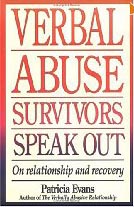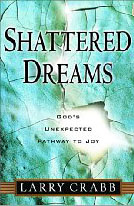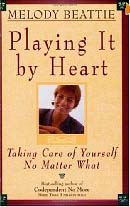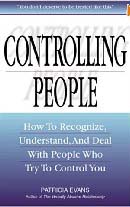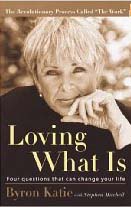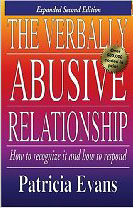
The Verbally Abusive Relationship
How to Recognize It and How to Respond
by Patricia Evans
Adams Media Corporation, Second Edition, 1996. 218 pages.
This book is the Patricia Evans book originally recommended to me by a friend. This was the first one she wrote, shedding light on the problem of verbal abuse. The other books expand on the ideas presented here. I highly recommend all of the books.
Verbal abuse is a crazy-making situation. The author explains how the verbally abusive person and his partner are coming from two completely different realities.
“Because of his need for dominance and his unwillingness to accept his partner as an equal, the verbal abuser is compelled to negate the perceptions, experiences, values, accomplishments and plans of his partner. Consequently, the partner may not even know what it is like to feel supported and validated in her relationship. She may take his negation as a lack of common interest or as a misunderstanding. In truth, a verbally abusive relationship is a more or less constant invalidation of the partner’s reality.”
The author elaborates:
“The fact that she can’t come to an understanding with her mate simply because he is abusive and will defeat her through abusive power plays is almost incomprehensible to the partner. Not coming to this realization, however, leaves the partner living in an incomprehensible reality where she is blamed for the battering of her own spirit.”
Being blamed for the battering of her own spirit is the line that resonated with me. As if it’s not bad enough to be told that one is a terrible person, reality is twisted so that if she protests, now she’s told she’s someone who’s always fighting, a terrible, argumentative person.
Patricia Evans also explains why it’s so difficult to break out of such a situation:
“Extraordinary self-esteem is precisely what is required to recognize that her mate is in another reality — that he sees the world through the model of Power Over.
“Unfortunately, living with a verbal abuser increasingly undermines the partner’s self-esteem making recognition that much more difficult. It takes tremendous self-esteem to validate one’s own reality when no one else seems to have done so. Sometimes, just a book that describes it, or knowing that one person “out there” understands can make all the difference.”
Perhaps this is why I found this book so affirming, so life-changing. She gives a name to the words that were making me feel terrible. They are verbal abuse. No wonder I feel bad.
“Verbal abuse: Words that attack or injure, that cause one to believe the false, or that speak falsely of one.”
Often this takes the form of rewriting history, such as picking lots of fights and then saying that the partner is so argumentative, no one could live with her.
Patricia Evans also discusses at length how to respond to verbal abuse. She compassionately warns you that it is difficult and encourages you that you have taken a big step in simply being able to recognize abuse. She affirms that abuse is irrational, and it is not your fault.
I like this encouragement:
“Don’t ever delude yourself into thinking that you should have the ability to stay serene no matter how you are treated. Your serenity comes from the knowledge that you have a fundamental right to a nurturing environment and a fundamental right to affirm your boundaries.”
In a divorce, the primary form verbal abuse takes is accusing and blaming. The author has some good words to say about responding to accusing and blaming:
“Don’t spend a second trying to explain that you weren’t doing what you were accused of doing or guilty of what you were blamed for. Just say, ‘Stop it.’ Abusive statements are lies about you which are told to you. They violate your boundaries. The abuser in effect invades your mind, makes up a ‘story’ about your motives, and then tells it to you. No human being has the right to do that to another.
“Generally, accusing and blaming involve lies about the partner’s intentions, attitudes, and motives. They leave her feeling frustrated and misunderstood and, therefore, especially desirous of explaining herself. If she does try to explain herself, the abuse is perpetuated.
“One more word about ‘explaining.’ If you are encountering abuse and feel that if you could explain things he’d understand, remember this: If someone started throwing rocks through your windows, you would be more inclined to tell him to stop than you would be to explain to him why he shouldn’t throw rocks. Verbal abuse is like a rock thrown through your window.”
She also talks about recovery.
“Recovery from verbal abuse is the opportunity to accept all your feelings and to recognize their validity. You may be the first person to recognize and accept them and to know that they are not wrong. They are, as we have said earlier, indicators that something is or was wrong in your environment, and it isn’t you.”
She includes a list of affirmations that support victims of verbal abuse, adapted from a list by Jennifer Baker Fleming. I like the list so much, I’m going to include them all here:
I can trust my own feelings and perceptions.
I am not to blame for being verbally abused.
I am not the cause of another’s irritation, anger, or rage.
I deserve freedom from mental anguish.
I can say no to what I do not like or want.
I do not have to take it.
I am an important human being.
I am a worthwhile person.
I deserve to be treated with respect.
I have power over my own life.
I can use my power to take good care of myself.
I can decide for myself what is best for me.
I can make changes in my life if I want to.
I am not alone; I can ask others to help me.
I am worth working for and changing for.
I deserve to make my own life safe and happy.
I can count on my creativity and resourcefulness.
Buy from Amazon.com
Find this review on the main site at: www.sonderbooks.com/Nonfiction/verbally_abusive_relationship.html
